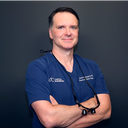Posted underRhinoplasty q&a
What is the difference between open roof deformity, inverted v deformity, and other deformities that occurs after hump removal?
How does a surgeon distinguish these problems due to overaggressive rhinoplasty of a bridge and distinguish as to what is needed to fix them (narrowing nasal bones, spreader grafts, and so on)? For example, how is inverted v deformity different from open roof deformity or saddle nose?
Answers (5)
From board-certified doctors and trusted medical professionals

Dr. James Bonaparte, MD, MSc, FRCSC
Facial Plastic Surgeon, Certified in Otolaryngology – Head and Neck Surgery
Answer
Dr. Frederic H. Corbin, MD (license restricted)
Board Certified Plastic Surgeon
Answer
Dr. Richard W. Fleming, MD (retired)
Board Certified Facial Plastic Surgeon
Answer
More Rhinoplasty Questions
See all Rhinoplasty Q&AWE SEND PRETTY
EMAILS
What’s trending? Who’s turning heads? Which TikTok myths need busting? We’ve got you. No fluff, no gatekeeping—just real talk. Get our free, unfiltered newsletter.
